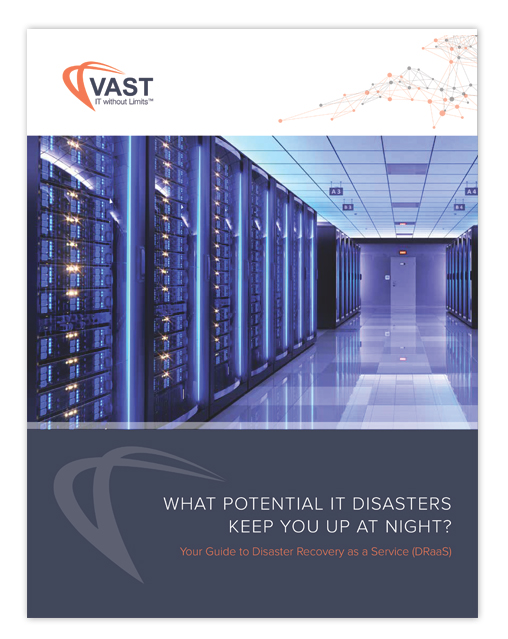Many organizations have adopted a multi-cloud approach to constructing IT environments that meet their objectives and requirements. Companies can fine-tune their environment by selecting services and solutions from multiple cloud service providers (CSPs). A multi-cloud infrastructure can be cost-effective, enable teams to choose the most efficient solutions, and avoid restrictive vendor lock-in.
Decision-makers leverage the strengths of various CSPs when deploying solutions from multiple vendors. The advantages of this approach are accompanied by an increase in the complexity of the resulting computing environment. Organizations can find it very challenging to protect their multi-cloud environment effectively. It is crucial that they successfully address these challenges to safeguard their valuable data resources.
Why Are Backups Critical in Multi-Cloud Environments?
Companies need to protect their valuable data resources in multi-cloud environments. Backups are a crucial component of data protection, complemented by a robust cybersecurity posture and rigorous identity and access management (IAM) policies. A reliable backup solution is vital for recovering from the following potential data loss scenarios.
- Threat actors continually launch cyberattacks, including ransomware and other malware variants, that can compromise system accessibility, performance, and impact customer satisfaction.
- A trustworthy employee can make a simple mistake that results in the deletion of a business-critical database.
- A malicious insider can intentionally corrupt or delete sensitive customer data.
- A software glitch or hardware failure can result in catastrophic data loss.
Organizations that lack valid backups to recover from these situations can suffer severe financial and reputational damage.
What Are the Challenges of Protecting Multi-Cloud Environments?
Devising a robust backup strategy for a multi-cloud environment presents significant challenges in comparison to protecting a traditional on-premises or single-cloud infrastructure. Companies need to be aware of these challenges so they can take the necessary steps to mitigate them.
Data fragmentation
Organizations with a multi-cloud environment, by definition, have data stored in multiple locations. It can be complicated to gain robust visibility into distributed data resources. A lack of visibility can result in missing some data elements in backup procedures. Teams must understand the different retention policies of their cloud platforms when developing and managing an effective backup strategy.
Inconsistent native backup capabilities
Companies utilizing multiple cloud providers need to understand the differences in each vendor’s native backup capabilities. Teams need to gain a deep understanding of the provider’s backup tools to determine if they align with their data protection requirements. Backup administrators can be hindered by the lack of a unified interface or strategy, and have to cobble together a valid backup plan. Some cloud services may support automated backups while others require manual intervention to protect data resources.
Data portability issues
Organizations may find it difficult or impossible to transfer backups between cloud providers. Vendors may have proprietary data formats that make the backups useless on other platforms. Data transfers may be affected by bandwidth limitations and high egress costs.
Additional disaster recovery complexity
Businesses need the ability to leverage backups efficiently for disaster recovery. Developing effective disaster recovery plans across multiple clouds adds complexity to the process. Teams must incorporate multiple recovery procedures into the overall strategy. Maintaining consistent recovery time objectives (RTOs) and recovery point objectives (RPOs) can be challenging when restoring data from and to multiple cloud platforms.
Security and compliance concerns
Organizations may face challenges in ensuring their backup data is secure and meets compliance standards across multiple cloud environments. Vendors may employ different encryption standards, which can compromise data security. Companies storing data in various regions must understand potentially differing regulatory requirements that can impact compliance. Tracking access to backup data is complicated by the fact that it is stored in multiple locations.
Best Practices for Selecting a Multi-Cloud Backup Strategy
Companies seeking to protect a multi-cloud environment need to adopt a structured approach to developing their backup strategy. The strategy must satisfy the organization’s business objectives, technical requirements, risk tolerance, and regulatory compliance posture. The following best practices are recommended when selecting and implementing comprehensive multi-cloud backups.
Perform a comprehensive environmental assessment
Decision-makers need to understand how the organization is using each cloud platform. They need to gather information about the cloud providers involved, which data resources are hosted in each cloud, and if there are cross-platform workload dependencies. All cloud assets must be inventoried and prioritized based on their importance to the business.
Define recovery objectives
The company must define clear recovery objectives. RTOs determine the speed at which data needs to be restored, and RPOs define the acceptable level of data loss. Teams must implement frequent backups with fast recovery tools to meet strict RTOs and RPOs. More relaxed requirements will allow for less frequent backups and more cost-effective storage solutions.
Understand security and compliance requirements
Businesses must ensure that the backup strategy addresses compliance requirements for data protection and availability. Regulated data typically is required to be encrypted in transit and at rest. The data may need to be stored in a specific country to meet compliance standards. Companies must implement strict access controls to limit access to backup data.
Assess alternative backup strategies
Companies can choose from three backup strategies, each with distinct advantages and disadvantages.
- Cloud-native backups utilizing the provider’s tools can provide platform integration and automation to streamline backup procedures. It is hindered by a lack of centralized management and the potential of vendor lock-in if backups are not transferable.
- Third-party backups using cloud-agnostic solutions offer a unified management dashboard, centralized recovery, and consistent cross-cloud backup policies. These benefits come with an additional cost and may involve further integration efforts.
- Hybrid backup strategies combine native and third-party solutions for more flexibility and workload optimization. A hybrid approach may present more management complexity.
Automate, test, and monitor backups
Teams should automate backups and set alerts to identify misses or failed procedures. Administrators should review audit logs to detect abnormal activity. Recovery teams should regularly test their procedures to minimize downtime and ensure system availability.
How VAST Supports Multi-Cloud Data Protection
VAST offers its customers top-notch technical support across a wide variety of advanced data protection and backup solutions. Our strategic partnerships with data protection vendors such as Cohesity and Veeam, as well as the major cloud providers, enable us to help you develop a robust multi-cloud backup strategy.
Our Cloud Backup-as-a-Service (CBaaS) and Disaster Recovery-as-a-Service (DRaaS) solutions offer a comprehensive, centralized approach for protecting multi-cloud environments. These services can handle on-premises, multi-cloud, and SaaS data resources to fully protect your company’s valuable information.
Contact us today to discover how VAST can assist you in selecting the ideal backup strategy for your multi-cloud environment.



